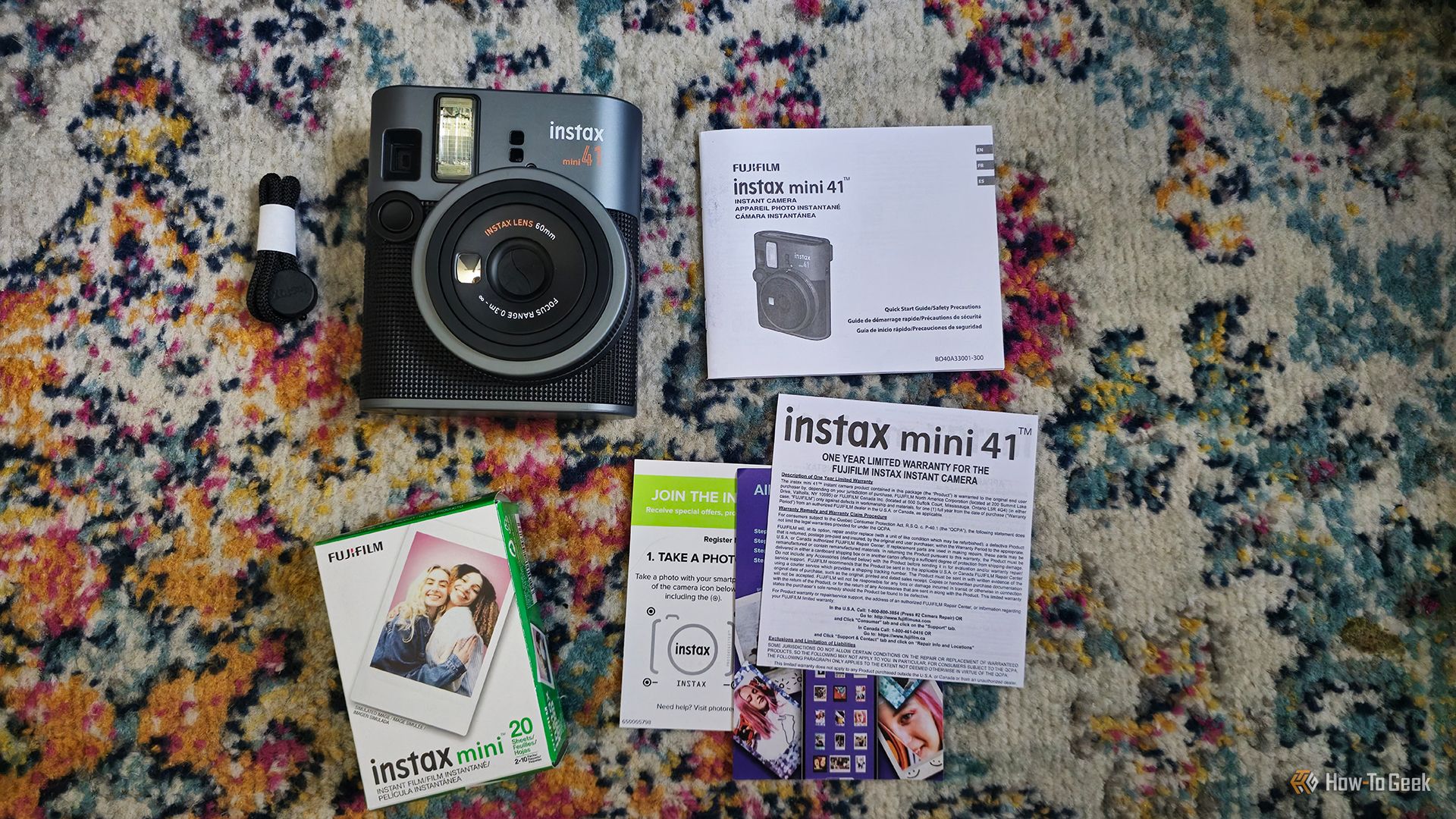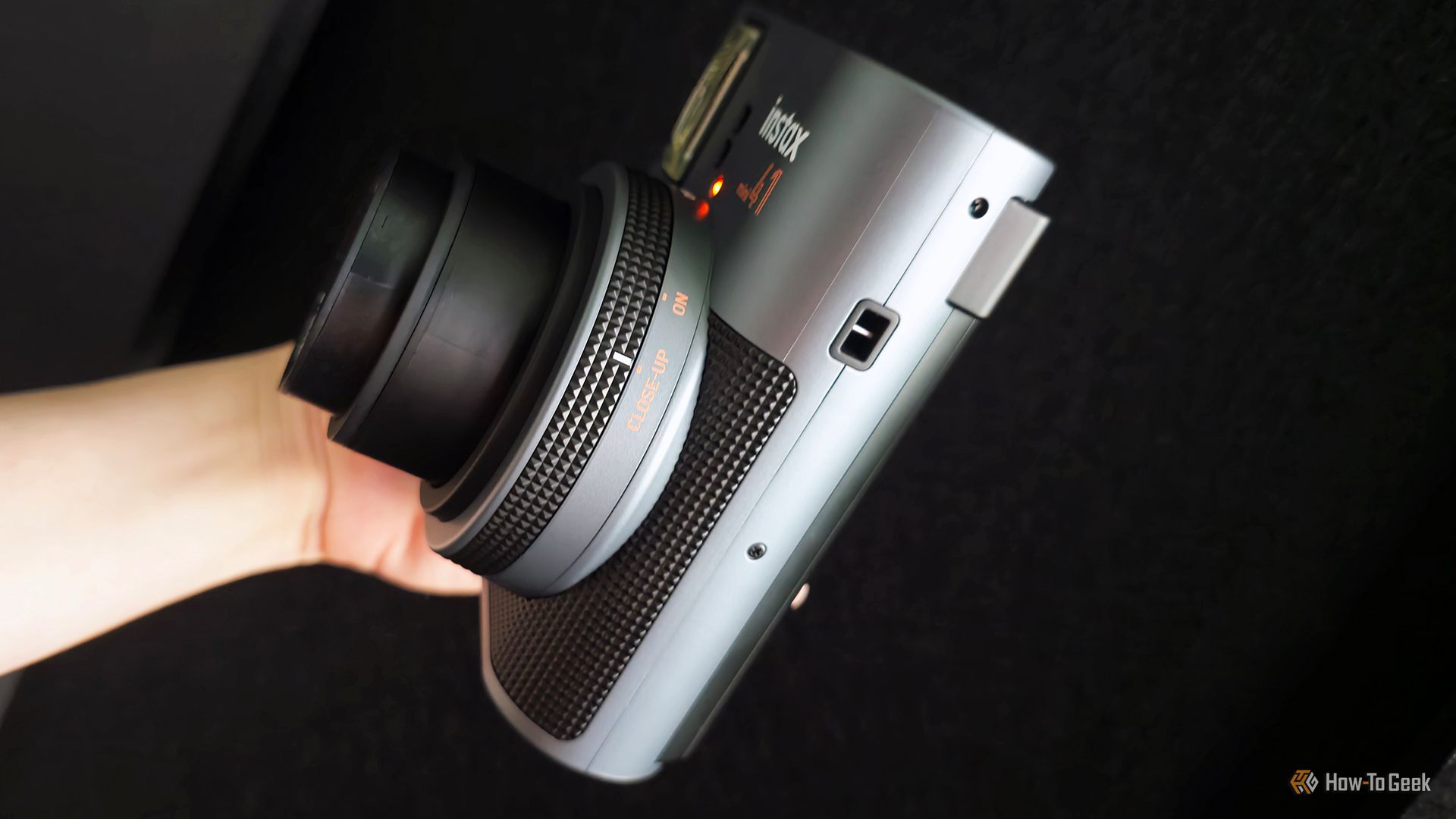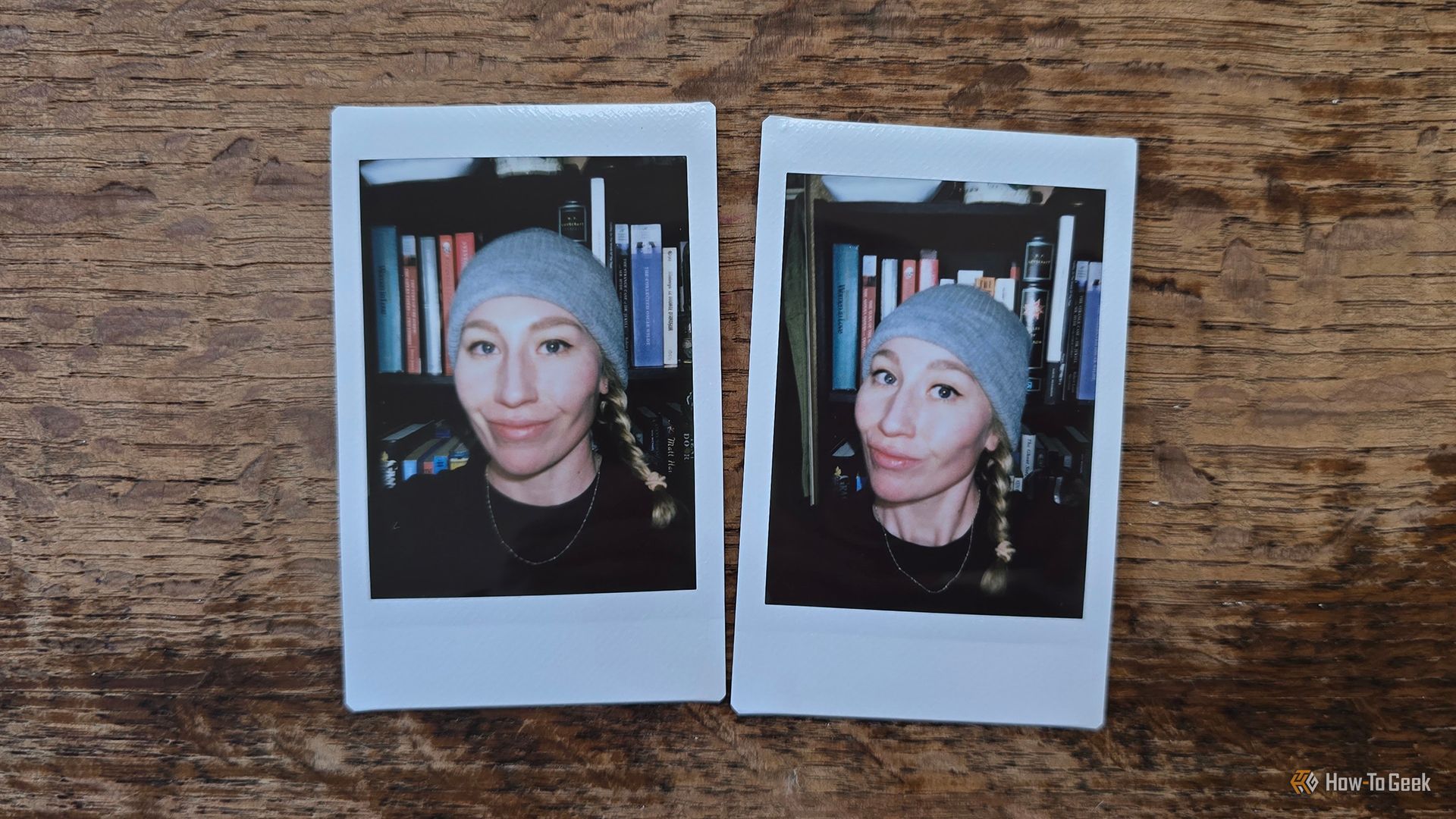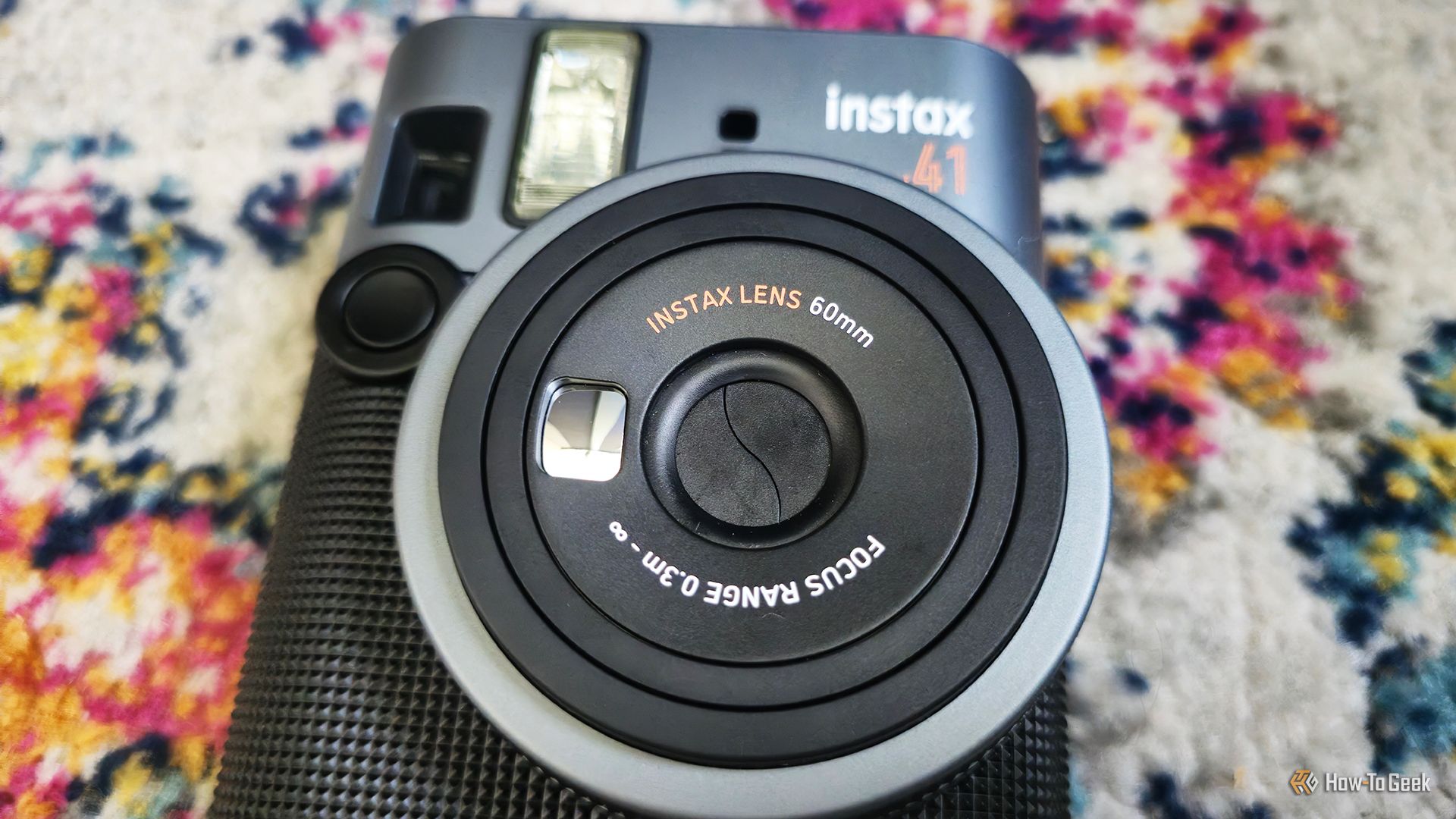Summary
- The Fujifilm Instax Mini 41 has a mature, beautiful retro design that meets easy point-and-shoot functionality for casual photography.
- Close-up photo mode can be finicky until you get the hang of it.
- With a focus on easy analog photography at its simplest, it lacks filters and any adjustments for flash and exposure, which can lead to overexposed photographs. Color contrast is also lacking at times.
The Fujifilm Instax Mini 41 follows the brand’s Instax Mini 40 with its classic, retro design, an easy point-and-shoot interface, and a new close-up mode. It’s convenient, straightforward, and beautiful, but its automatic exposure makes photo-taking in various lighting conditions a hit or miss.
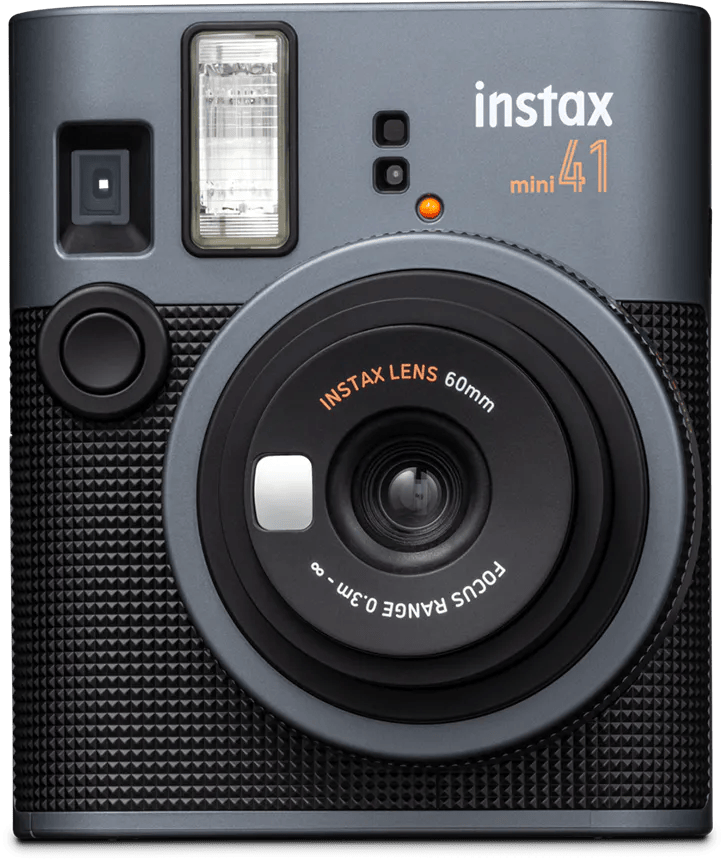
Fujifilm Instax Mini 41
The Fujifilm Instax Mini 41 blends retro vibes with simple point-and-shoot functionality. Its automatic exposure, close-up mode, and simple interface make it perfect for capturing spontaneous, casual photos.
- Easy point-and-shoot functionality
- Fun retro design
- Can capture some decent shots in dim lighting
- Close-up photo mode can be finicky
- Color saturation and exposure are hit or miss
- No filter modes or photo adjustment
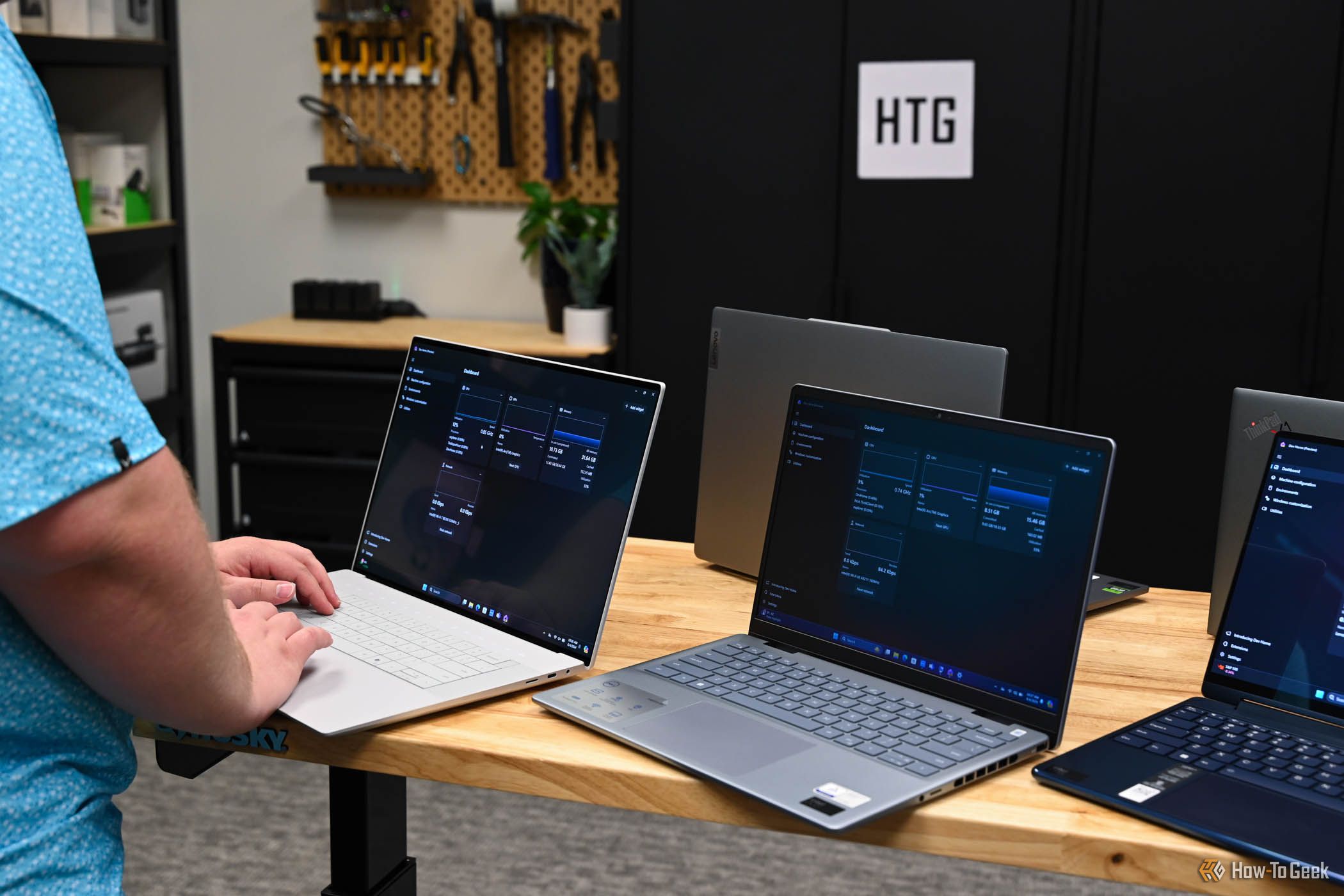
See Our Process
How We Test and Review Products at How-To Geek
We go hands-on with every product to ensure it’s worth your time and money.
Price and Availability
The Fujifilm Instax Mini 41 instant camera will be available for purchase starting at the end of April 2025. You can grab one in black (the only available color) from retailers like Amazon, Best Buy, and B&H Photo starting at $100 for the camera alone, or slightly higher for a bundle with film and accessories. The camera uses Fujifilm’s Instax Mini film packs, which typically retail for $25 for a two-pack of 10 exposures, about $1.25 per exposure.
A Retro-Style Point-and-Shoot Design
The Fujifilm Instax Mini 41 follows the same retro-inspired design that its predecessor, the Mini 40, did. But while the Mini 40 resembled a vintage Leica, the Mini 41 reminds me more of an Olympus or Canon AE-1 from the 1970s. The brand didn’t alter much from the 40 to the 41, except that the 41 skips the faux leather plastic chassis, opting for a sleek plastic body with a textured black front. Despite being all plastic, it feels solid and doesn’t feel likely to break with extended use. What I appreciate about this iteration of the Instax line is its more mature look and feel—no clunky, cartoon-like body and colors here, folks.
The Instax Mini 41 is also slightly heavier (about half an ounce) and skips the protruding tab on the lens. Everything else with the Mini 41’s design is standard to Fujifilm’s instant camera line. The shutter button is directly below the viewfinder, while the irreplaceable selfie mirror is integrated into the exterior of the lens.
Instead of a button or lever to release the lens, this required a twist of the black lens ring to turn the camera on. A second twist would put the camera in what Fujifilm calls “close-up mode” — more on that later. The back houses the film compartment and a film counter to let you know how many exposures you have left in your film pack, while the top is where the film ejects after taking a photo.
When viewing the camera from the back, the battery compartment is on the right-bottom side. And, of course, each side of the camera has a strap eyelet for attaching the included wrist strap.
Two Shooting Modes
After I loaded a film pack into the camera and installed the included AA batteries, I was ready to shoot. The nice thing about these instant cameras is they’re ready to use out of the box and don’t require charging. It is a bummer to use physical batteries, though, when most tech these days doesn’t require them.
While there isn’t much I can say about the operation of the Instax Mini 41 (because it lacks any customizable exposure, settings, and filters), I can comment on its two shooting modes. These are standard mode (the lens ring set to “on”) and “close-up” mode.
Standard mode is the usual setting for taking photos of subjects who aren’t right up in the camera, and has a decent wide angle that captures more than you’d think it would. I used this mode to photograph pets, wildlife, and flowers. Close-up mode, however, has an 11.8-inch focal distance and is best for taking pictures within 11.8 to 19.7 inches away from the lens. At first glance (without reviewing the specs), I thought close-up meant macro, and I tried to take photos even closer to my subjects, and the resulting photographs were, to put it bluntly, atrocious. Please, don’t follow my lead.
Close-up mode worked quite well for capturing selfies or a startlingly close view of my dog’s face (mainly, his nose). Still, I struggled to perfect this mode until I got the knack of eyeballing the correct distance, getting the photos to focus, and aligning the circular viewfinder mark with the center of my subject (especially if it was a moving pet).
This is to say that since the Instax Mini 41 is analog, anyone new to analog photography will likely go through some trial and error here.
Decent Photo Quality With Some Caveats
Like other Instax Mini cameras, the Instax Mini 41 has a lens (60mm f/12.7) that captures and directs light onto the film. During this process, the film begins to develop upon ejecting from the top of the camera, and voila, you soon have an instant photograph.
If you can remember how remarkable the process is (and how novel it feels when you’re used to digital cameras), you may forgive the Instax Mini 41 for its limitations. One of these limitations is obvious—with only a single button, there’s no way to apply effects to your photos in the camera interface itself. If you so wish, you can do that afterward in the InstaxUp! app (available on Android and iOS) after scanning in your pictures. Still, it lacks that customization pizzazz that some other Instax cameras offer, like the Instax Mini 99 or the Instax WIDE Evo.
Other shortcomings were due to automatic exposure and auto-flash, which sometimes resulted in unpleasant photos. While I used the Instax Mini 41, I attempted to test its capabilities in low-light situations to see how its automatic exposure and flash performed. I would still recommend using the Instax Mini 41 in bright lighting over anywhere else, but pointed away from direct sunlight for the best results.
No matter what lighting, the flash automatically fired (there’s no way to turn it off). Luckily, Fujifilm calibrated the auto exposure around this, but it doesn’t always yield the best results.
For example, I did my first photo shoot outdoors at a nighttime gathering with friends. I attempted to photograph a shot of an outdoor fire pit and three cats staring out the back door at us. The fire pit shot was my user error—the flash reflected on the glass and created an overexposed look. The backdoor photo didn’t turn out well due to the indoor lighting against the darkness. But indoors, a picture of my friend’s cat was also overexposed in the dim lighting.
But my only bad shots weren’t at night or in dim lighting, either. Taking a photo of some cattails in the afternoon yielded muddy colors and overexposed surroundings. A picture of my cat in her cat tree in mid-sun also came out particularly washed out.
That isn’t to say that all the times I took photos, they didn’t turn out well. I did get some great shots with dim indoor lighting (one of my other cat in a chair) and great outdoor shots of flowers (especially the shot of my dog standing in some flowerbeds).
The color saturation, for me, however, was also a hit or miss. Although the colors look vibrant, they’re usually somewhat muted (sort of like retro photos of yore) and don’t fully capture the true depth and saturation. Some color imbalances showed up in dim lighting, like when I took selfies in front of a bookshelf.
I also found the viewfinder somewhat bothersome, as it occasionally appeared overly blurry and made it difficult to surmise what my photos would turn out after shooting. This, on top of someone not being used to an instant camera’s off-center viewfinder, may add to the learning curve of adapting to the camera’s quirks and getting clear, good shots.
Should You Buy the Fujifilm Instax Mini 41 Camera?
If you keep in mind that the Fujifilm Instax Mini 41 is an instant camera for spontaneous, fun photos rather than any serious photography (as one should know from its price point), then you probably won’t be disappointed by its shortcomings. Nonetheless, there’s a knack to getting your photos to turn out how you want them with this camera, especially when sorting out close-up mode and the lighting situations in which its auto-flash and exposure work best.
Its nice retro style and straightforward functionality probably make this a good choice for someone looking to upgrade from an older Instax Mini or fool around with instant photography as a beginner. For more advanced camera users, I’d recommend a different instant camera model.

Fujifilm Instax Mini 41
The Fujifilm Instax Mini 41 blends retro vibes with simple point-and-shoot functionality. Its automatic exposure, close-up mode, and simple interface make it perfect for capturing spontaneous, casual photos.

